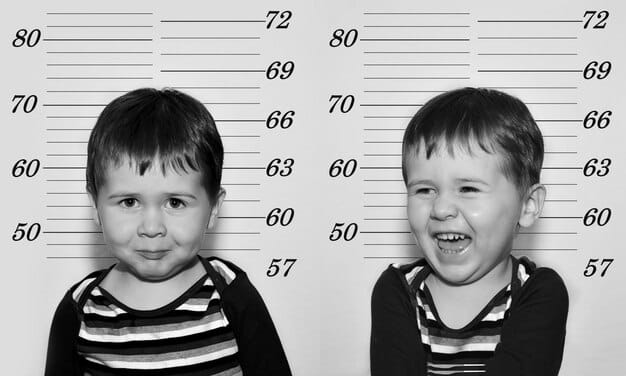Understanding Federal Hate Crime Legislation Updates & Racial Justice in 2025

Understanding the Latest Updates to Federal Hate Crime Legislation and Their Impact on Racial Justice in 2025 involves analyzing amendments, judicial decisions, and policy changes that enhance or challenge protections against hate crimes, particularly concerning racial identity and community safety in the United States.
The ongoing pursuit of racial justice in the United States involves many complex factors, one of which is the way the legal system addresses hate crimes. Understanding the Latest Updates to Federal Hate Crime Legislation and Their Impact on Racial Justice in 2025 requires a close look at legislative changes, court decisions, and evolving policies that shape how these crimes are prosecuted and prevented.
The Evolution of Federal Hate Crime Legislation
Federal hate crime legislation has a long and complex history, evolving significantly over time to address various forms of bias-motivated violence and discrimination. To fully grasp the impact of the latest updates, it’s crucial to understand how these laws have developed and adapted to changing societal attitudes and needs.
Initially, federal involvement in hate crimes was limited, primarily focusing on civil rights violations. However, landmark legislation like the Matthew Shepard and James Byrd Jr. Hate Crimes Prevention Act of 2009 expanded federal jurisdiction and provided stronger protections for marginalized groups. This act, named after two victims of brutal hate crimes, marked a turning point in the federal government’s commitment to combating bias-motivated violence.
Key Milestones in Hate Crime Legislation
Several key pieces of legislation have shaped the landscape of federal hate crime law. Understanding these milestones provides context for evaluating the significance of recent updates.
- Civil Rights Act of 1964: Although not explicitly focused on hate crimes, this landmark legislation prohibited discrimination based on race, color, religion, sex, or national origin, laying the groundwork for future anti-discrimination laws.
- Hate Crime Statistics Act of 1990: This act mandated the collection of data on hate crimes, providing valuable information about the prevalence and nature of these offenses.
- Violent Crime Control and Law Enforcement Act of 1994: This act included provisions that increased penalties for crimes motivated by bias.
The evolution of federal hate crime legislation reflects a growing awareness of the devastating impact of bias-motivated violence on individuals and communities. Recent updates build upon this foundation, aiming to strengthen protections and address emerging challenges.

Analyzing the Latest Legislative Amendments
Recent years have seen significant legislative amendments aimed at reinforcing federal hate crime laws. These changes often reflect an effort to address gaps in existing legislation, respond to emerging forms of hate-motivated violence, and ensure that federal laws align with constitutional principles.
One key area of focus has been expanding the categories protected under federal hate crime laws. While existing legislation covers race, religion, and sexual orientation, some amendments have sought to include gender identity, disability, and other characteristics. These expansions aim to provide comprehensive protection for all individuals, regardless of their background or identity.
Specific Amendments and Their Rationale
Examining specific amendments reveals the intent behind these legislative changes and their potential impact on racial justice.
- Inclusion of Gender Identity: Recognizing that transgender individuals are often targets of hate-motivated violence, some amendments have explicitly included gender identity as a protected category.
- Enhanced Data Collection: Amendments may require more detailed data collection on hate crimes, including information about the victim’s characteristics, the perpetrator’s motive, and the location of the crime.
- Increased Penalties: Some amendments propose increasing penalties for hate crimes, sending a strong message that bias-motivated violence will not be tolerated.
These legislative amendments represent an ongoing effort to refine and strengthen federal hate crime laws, ensuring that they are effective in protecting vulnerable populations and promoting racial justice.
Judicial Interpretations and Their Impact
The interpretation of hate crime legislation by federal courts plays a crucial role in shaping its practical application and overall effectiveness. Judicial decisions can clarify ambiguous provisions, establish legal precedents, and define the scope of federal authority in prosecuting hate crimes.
One key area of judicial interpretation involves the First Amendment and its relationship to hate crime laws. Courts have grappled with the challenge of balancing free speech rights with the need to protect individuals from bias-motivated violence and intimidation. While hate speech itself may be protected under the First Amendment, actions that cross the line into violence or threats are not.

Landmark Court Cases on Hate Crimes
Several landmark court cases have significantly shaped the legal landscape of hate crimes, providing important guidance for future interpretations.
- Wisconsin v. Mitchell (1993): The Supreme Court upheld a state law that enhanced penalties for crimes motivated by the victim’s race, religion, or other protected characteristics.
- Virginia v. Black (2003): The Supreme Court addressed the constitutionality of a state law prohibiting cross burning with the intent to intimidate, clarifying the relationship between hate speech and criminal conduct.
- United States v. Stevens (2010): Though not directly a hate crime case, this ruling clarified the limits of free speech regarding animal cruelty videos, setting a precedent for narrowly defining unprotected speech.
Judicial interpretations of hate crime legislation have a profound impact on its enforcement and effectiveness. Understanding these interpretations is essential for evaluating the legal landscape and advocating for policies that promote racial justice.
The Role of Federal Agencies in Enforcement
Federal agencies play a vital role in enforcing hate crime legislation, investigating potential violations, and providing support to victims. The Department of Justice (DOJ), the Federal Bureau of Investigation (FBI), and other agencies are responsible for ensuring that hate crimes are properly addressed and prosecuted.
The DOJ’s Civil Rights Division is specifically tasked with enforcing federal laws that prohibit discrimination and bias-motivated violence. This division works closely with local law enforcement agencies to investigate hate crimes and bring perpetrators to justice. The FBI also plays a crucial role in gathering data on hate crimes and providing training to local law enforcement officers.
Federal Agency Initiatives and Programs
To combat hate crime, federal agencies implement various initiatives and programs aimed at prevention, investigation, and prosecution.
- Community Outreach: Federal agencies conduct outreach to communities affected by hate crimes, providing resources and support to victims and promoting understanding and tolerance.
- Training and Education: The FBI and other agencies offer training to law enforcement officers on how to identify, investigate, and prosecute hate crimes.
- Data Analysis and Reporting: The FBI collects and analyzes data on hate crimes, providing valuable information to policymakers and researchers.
The effective enforcement of hate crime legislation requires collaboration between federal agencies, local law enforcement, and community organizations. By working together, these entities can help prevent hate crimes and ensure that perpetrators are held accountable.
Challenges and Limitations of Current Laws
Despite the progress made in federal hate crime legislation, challenges and limitations persist. These challenges can hinder the effective enforcement of these laws and limit their impact on racial justice.
One major challenge is proving that a crime was motivated by bias. While some hate crimes are overt and clearly driven by prejudice, others may be more subtle, making it difficult to establish the necessary intent. Additionally, some victims may be reluctant to report hate crimes due to fear of retaliation or distrust of law enforcement.
Specific Limitations and How to Address Them
Addressing the limitations of current hate crime laws requires a multifaceted approach that includes legislative reform, community engagement, and enhanced law enforcement training.
- Lack of Comprehensive Data: Improving data collection efforts can provide a more accurate picture of hate crime trends and inform policy decisions.
- Underreporting: Building trust between law enforcement and marginalized communities can encourage victims to report hate crimes.
- Difficulty Proving Intent: Providing training to law enforcement on how to identify and investigate hate crimes can help overcome the challenge of proving bias-motivation.
Overcoming these challenges is essential for ensuring that federal hate crime laws are effective in protecting vulnerable populations and promoting racial justice.
Looking Ahead: The Future of Hate Crime Legislation in 2025
As we look ahead to 2025, the future of hate crime legislation remains uncertain, but ongoing efforts to address bias-motivated violence and discrimination are likely to continue. Emerging issues, such as online hate speech and the rise of extremist groups, will likely shape the debate and inform future legislative changes.
One potential area of focus is strengthening laws to address online hate speech. While the First Amendment protects free speech, even offensive or hateful expression, there is growing concern about the potential for online hate speech to incite violence and discrimination. Balancing free speech rights with the need to protect individuals from online harassment and intimidation will be a key challenge.
The future of hate crime legislation will depend on the efforts of policymakers, law enforcement, community organizations, and individuals to promote understanding and tolerance. By working together, we can create a society where all individuals are treated with dignity and respect.
| Key Point | Brief Description |
|---|---|
| ⚖️ Legislative Updates | Amendments expanding protected categories and enhancing data collection. |
| 🏛️ Judicial Impact | Court interpretations defining the scope and limits of hate crime laws. |
| 🛡️ Agency Enforcement | Federal agencies investigating and prosecuting hate crimes. |
| 🌐 Future Challenges | Addressing online hate speech and extremist groups. |
FAQ
▼
A hate crime is a criminal offense motivated by bias against a victim’s race, religion, ethnicity, sexual orientation, disability, or other protected characteristic. It involves actions targeting individuals due to their perceived group affiliation.
▼
It provides legal recourse for victims of racially motivated violence, sends a message that such crimes are not tolerated, and supports broader efforts to promote equality and combat systemic racism within communities.
▼
Proving bias motivation is a major challenge, as is the reluctance of victims to report crimes due to fear or distrust. Also, distinguishing hate speech from protected expression is legally complex.
▼
The DOJ and FBI investigate and prosecute hate crimes, offer training and resources to local law enforcement, and conduct community outreach for prevention. Effective collaboration is essential for a stronger response.
▼
Future developments may focus on strengthening laws against online hate speech, expanding protected categories, and improving data collection to better understand and address hate crime trends. More inclusion benefits everyone.
Conclusion
In conclusion, understanding and navigating the intricacies of hate crime legislation, particularly concerning racial justice, demands continuous review and adaptation. By strengthening protections, addressing limitations, and engaging communities, we can strive toward a more inclusive and equitable society.





